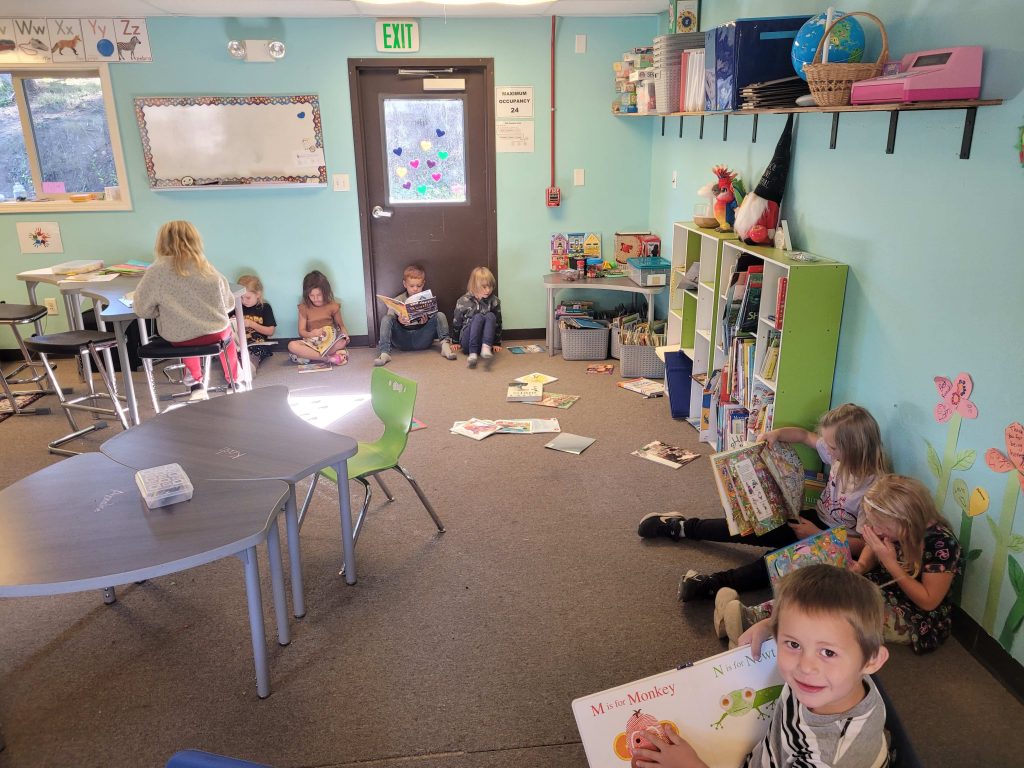Two cornerstones of the Mountain Community School model are concerned with the student as an individual: personalized learning, and mastery-based assessments. These concepts may be new to you, so let’s explore what they mean.
You are all individuals….
A personalized learning approach starts with the realization that each student brings unique strengths, experiences, and interests into the classroom. In other words, students are diverse – this is likely obvious to anyone who has more than one of them!
In 2006, Sir Ken Robinson, a visionary thinker on creativity and culture, gave a groundbreaking TED talk (“Do Schools Kill Creativity?”) in which he appealed for a more diverse understanding of human intelligence and ability. This talk struck a worldwide chord and has been viewed over 70 million times in the past 15 years.
In it, he points out that:
“Human communities depend upon a diversity of talent, not a singular conception of ability. And at the heart of the challenge is to reconstitute our sense of ability and intelligence.”
In other words, the fact that we all bring unique strengths, experiences, and interests to our life and work is the very foundation of a successful human society. We need builders, doers, and artists. We need great thinkers and people skilled in personal connections. And we need people who know themselves enough to bring their best to whatever we do.
So, what are we doing in schools to encourage students to:
- Figure out what their unique abilities and talents are, and
- Develop these into strengths that they can use to contribute to their families, communities and the world?
That is where personalized learning comes in….
What is a Personal Education? aka… How To Instruct a Group Of DIverse Children
We approach personalized learning in several ways.
Core Subjects
For Core subjects, such as math, reading and writing, students work on these at a level and pace that works best for them.
Instead of grouping students by age, they are grouped based on their current academic level and work with similar level peers. This could mean that a second grader that reads at a fifth grade level is working with older students for reading, but this same student may also be working with younger students if their math skills are at that level (and vice versa). Groups are instructed by teachers, using a variety of available resources to provide the instruction.
Students also have the opportunity to demonstrate their understanding of a topic throughout the year and, upon demonstrating proficiency, they can then advance to the next level without having to wait until the end of the school year.
If you consider, for a moment, learning you have done as an adult, you may notice that sometimes you are fully absorbing the information and moving quickly, while other times you might need to take a break and let the learning sink in. Learning is not linear. This model allows students to follow their own pacing, moving quickly when needed and more slowly when needed.
This ability to go at your own pace is called “Competency-based assessment” or “mastery-based learning”, and it puts the learner at the center of the program. Students move through the program only by demonstrating mastery of the learning targets for each subject at a particular grade level.
This results in instruction in which the pace of learning and the instructional approach are optimized for the needs of each student.
Personal Projects
Personalization also means students can pick personal projects that they work on during a designated period of time each day. Personal projects can be thought of similarly to electives but with no limits on choice. Examples of personal projects could include learning Latin, how to play the guitar, or building a robot.
Because there will be a wide range of topics that children are interested in, the teachers serve as guides and assistants to find resources for the learning. These resources will include community members as often as possible, and may also include online learning resources, written resources (such as books and guides), and experiential learning activities. The goal is to help the student design and execute a personal project that is meaningful to them, and in which they reach their personal learning goals.
Additional information on project based learning can be found in this post (link)
Learning Goals
One of the most important parts of Personalization means helping each student progress on developing their character and leadership skills to help them take control and responsibility for their learning.
Teachers work with each student, as an individual, to develop learning goals for themselves and to track their progress towards these goals. Students are guided to have high expectations for themselves, move at their own pace towards these goals, demonstrate proficiency before moving on, and to reflect and celebrate their accomplishments along the way. This gives students agency over their learning. which is critical for true mastery of a subject.
It’s about the relationships
In order to make this personalized dance between student and teacher work, the key is in the relationship. Because we are a small community, we place emphasis on building an intentional culture that nurtures relationships and interpersonal problem solving.
The teacher is not just a conduit of information that is passed in one direction. Instead, the teacher is also a guide, helping the student to see their own learning, give them a voice and choice in their learning, understand how they learn best, and take responsibility for their progress.
We care about children as individuals, with different interests, different ways of thinking and learning, and different paces and ways of absorbing knowledge. In addition to teaching core skills necessary for any profession, our goal is to help each student understand and embrace his or her own abilities and talents so they can harness their true potential.

